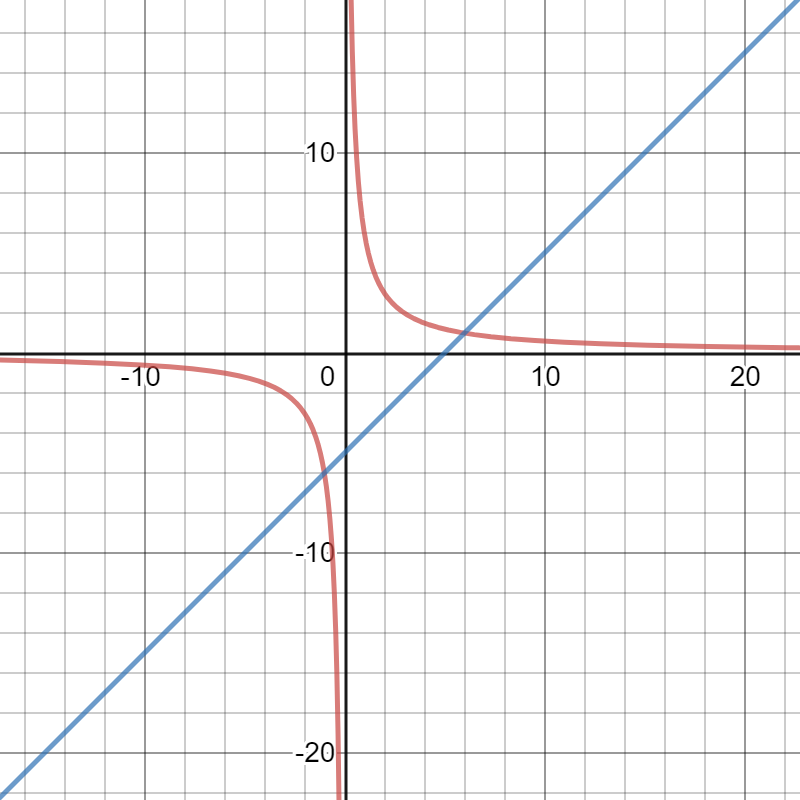Varieties of Algebra
2020 James B. Wilson
Colorado State University

Objectives
- Define Polynomials & Equational Algebraic Laws
- Demonstrate common laws
- Develop varieties
Generalizing high-school aglebra
Highschool Algebra
- Equation: \(\ell:\equiv (y=x^2+3).\)
- Algebraic Variety: \[Z(\ell)=\{(x,y)\mid \ell(x,y)\}.\]
- Geometry: parabola.
Abstract Algebra
- Law: \(\Phi(x,y):\equiv (x+y=y+z).\)
- Variety of algebras: \[\mathfrak{V}(\Phi)=\{\langle A,+\rangle\mid (\forall x,y:A).\Phi(x,y)\}.\]
- Family: commutative

\[\begin{array}{c|ccc} * & 1 & a & b\\ \hline 1 & 1 & a & b\\ a & a & a & b\\ b & b & b & b\end{array}\]
\[\begin{array}{c|ccc} \oplus & x & y\\ \hline x & y & x\\ y & x & y \end{array}\]
\[\mathbb{N}\]
\[\begin{array}{c|ccc} * & 1 & a & b\\ \hline 1 & 1 & a & b\\ a & a & a & b\\ b & a & a & b\end{array}\]
\(\mathbb{M}_2(\mathbb{Q})\)
\[\begin{array}{c|ccc} \oplus & x & y\\ \hline x & x & y \\ y & x & y \end{array}\]
All \([2]\)-algebraic structures
Highschool Algebra
- Equation: \(\ell:\equiv (z=x^2+y^2).\)
- Algebraic Variety: \[Z(\ell)=\{(x,y,z)\mid \ell(x,y,z)\}.\]
- Geometry: paraboloid.
Abstract Algebra
- Law: \(\Phi(x,y,z):\equiv (x*(y*z)=(x*y)*z).\)
- Variety of algebras: \[\mathfrak{V}(\Phi)=\{\langle A,*\rangle\mid (\forall x,y,z:A).\Phi(x,y,z)\}.\]
- Family: associative
Highschool Algebra
- Equation: \(\ell:\equiv (0=xy).\)
- Algebraic Variety: \[Z(\ell)=\{(x,y)\mid \ell(x,y)\}=\{(0,0)\}.\]
- Geometry: point.
Abstract Algebra
- Law: \(\Phi(x):\equiv (x*1=x=1*x).\)
- Variety of algebras: \[\mathfrak{V}(\Phi)=\{\langle A,*\rangle\mid (\forall x:A).\Phi(x)\}.\]
- Family: unital.
Highschool Algebra
- Equation: \(\ell_1:\equiv (-6=xy)\) \(\ell_2:\equiv (y=x+5)\).
- Algebraic Variety: \[Z(\ell_1,\ell_2)=\{(x,y)\mid \ell_1(x,y), \ell_2(x,y)\}=\{(2,7),(3,8)\}.\]
- Geometry: intersection locus.
Abstract Algebra
- Law: \[\Phi_1(x) :\equiv (x*1=x=1*x)\] \[\Phi_2(x,y,z):\equiv (x*(y*z)=(x*y)*z).\]
- Variety of algebras: \[\mathfrak{V}(\Phi_1,\Phi_2)=\{\langle A,*\rangle\mid (\forall x,y,z:A).\Phi(x)\wedge\Gamma(x,y,z)\}.\]
- Family: monoid.

\[\begin{array}{c|ccc} * & 1 & a & b\\ \hline 1 & 1 & a & b\\ a & a & a & b\\ b & b & b & b\end{array}\]
Polynomials & Laws
Definition.
Fix a signature \(\sigma\).
A polynomial (or "word" or "formula") in \(\sigma\) is a grammatically correct ("parseable") string of
- variables
- symbols in \(\sigma\), or
- parenthetical groupings.
E.g. For \(\sigma=\{+,0\}\), \(x+y,(x+0)+(y+z)\);
but not \(x^2-x\), the latter requires \(\sigma\) contain `\(-\)' and products.
\(\frac{x^2+1}{x-2}\)
\(x^2+1\)
\((x-2)^{-1}\)
\(x^2\)
\(1\)
\(x\)
\(x\)
\(u^{-1}\)
\(u=x-2\)
\(+\)
\(\times\)
\(\times\)
\(x\)
\(-(1+1)\)
\(-v\)
\(v=1+1\)
\(1\)
\(1\)
\(+\)
\(u\)
\(^{-1}\)
\(v\)
\(-\)
\(+\)
\(\circ\)
\(\circ\)
Operator
Variable
Polynomial/Word
(Meta-language)
A generalize view of "polynomials", "words", and "formulas"
Definition.
Fix a signature \(\sigma\).
- A polynomial in \(\sigma\) is a grammatically correct ("parseable") string of variables & symbols in \(\sigma\), and groupings.
- An (equational) law is \(\Phi(x_1,\ldots)=\Gamma(x_1,\ldots)\) where \(\Phi,\Gamma\) are words/formulas/polynomials.
E.g. For \(\sigma=\{+,0\}\), \(x+y=y+x, x+0=x\);
but not \(x+(-x)=0\), uses symbols outside \(\sigma\).
Varieties of Algebra
Definition.
- Fix a signature \(\sigma\).
- A variety of \(\sigma\)-algebraic structures is the set of all algebraic structures that satisfy a fixed set \(\Phi_*=\{\Phi_1,\Phi_2,\ldots\}\) of laws.
- Denote it \(\mathfrak{V}(\Phi_*)\). (Fraktur "V")
Do not confuse with more "high-school" concept of "algebraic variety" whose elements are points in space.
Example: Semigroup
- Fix a signature \(\sigma=\{*\}\).
- Law: associative
- Variety: \(\mathfrak{V}(x*(y*z)=(x*y)*z)\) "Semigroups"
Example: Monoid
- Fix a signature \(\sigma=\{*,1\}\).
- Laws: associative, identity
- Variety: \(\mathfrak{V}(x*(y*z)=(x*y)*z,x*1=x=1*x)\) "Monoid"
Technically \(x*1=x\) and \(1*x=x\) are separate laws.
Example: Groups
- Fix a signature \(\sigma=\{*,^{-1},1\}\).
-
Laws:
- Asc. \(\Phi_1(x,y,z):\equiv (x*(y*z)=(x*y)*z\)
- Id. \(\Phi_2(x):\equiv (x*1=x=1*x)\)
- Inv. \(\Phi_3(x):\equiv (x*x^{-1}=1=x^{-1}*x)\).
- Variety: \(\mathfrak{V}(\Phi_*)\) "Groups"
Example: Abelian groups
- Fix a signature \(\sigma=\{+,-,0\}\).
-
Laws:
- Group
- Comm. \(\Phi_4(x,y):\equiv (x+y=y+x)\).
- Variety: \(\mathfrak{V}(\Phi_*)\) "Abelian Groups"
Example: Ring
- Fix a signature \(\sigma=\{*,1,+,-,0\}\).
-
Laws:
- Asc. +, * \(\Phi_1^{\#}(x,y,z):\equiv (x\# (y\# z)=(x\# y)\# z\)
- Id. (*,1), (+,0) \(\Phi_2^{\#,\epsilon}(x):\equiv (x\# \epsilon=x)\)
- Comm. + \(\Phi_3(x,y):\equiv (x+y=y+x)\).
- Inv. +,-,0 \(\Phi_4(x):=\equiv (x+(-x)=0)\).
- L.Dist. \(\Phi_5(x,y,z):\equiv (x*(y+z)=x*y+x*z)\).
- R.Dist. \(\Phi_6(x,y,z):\equiv ((x+y)*z=x*z+y*z)\).
- Variety: \(\mathfrak{V}(\Phi_*)\) "Ring"
Non-Example: Fields
- Fix a signature \(\sigma=\{*,1,+,-,0\}\).
-
Laws:
- Ring *,1,+,-,0
- Mult. Inv. \(\Phi_6(x):\equiv (x\neq 0\Rightarrow x*x^{-1}=1)\).
- Not Variety: clearly last rule is not like the others, much more than an equation.
Fields are clearly important, why kick them out over such a small thing?
Come back to this in next lesson.
Example: Lie ring
- Fix a signature \(\sigma=\{[,],1,+,-,0\}\).
-
Laws: \(\Phi_i\)
- Abelian Group +,-,0
- \([x,y+z]=[x,y]+[x,z]\)
- \([x+y,z]=[x,z]+[y,z]\)
- Jacobi \[[x,[y,z]]=[[x,y],z]+[y,[x,z]]\] \[\frac{d}{dx}(fg)=\frac{df}{dx}g+f\frac{dg}{dx}.\]
- Variety: \(\mathfrak{V}(\Phi_*)\) "Lie Ring"